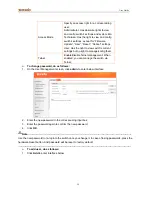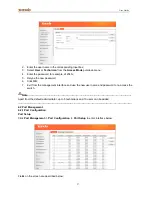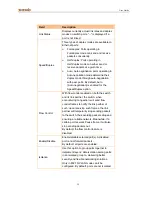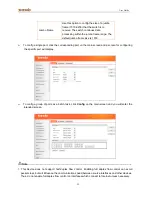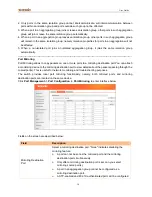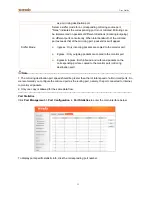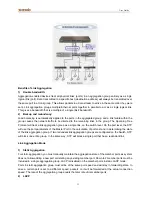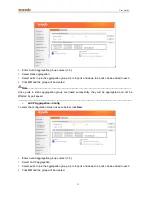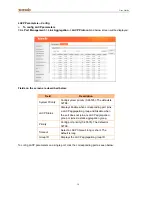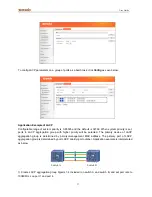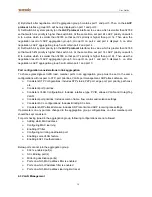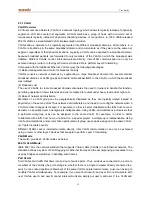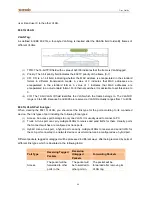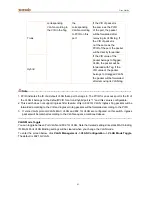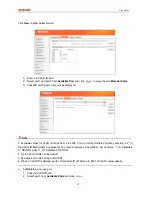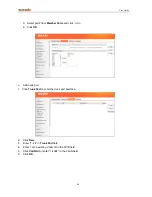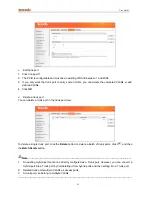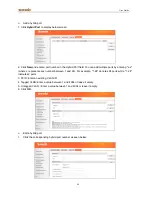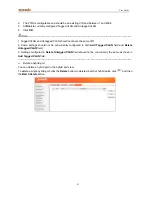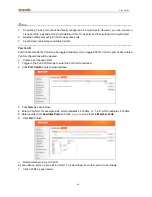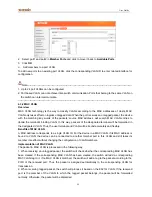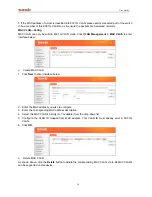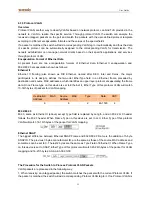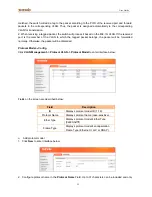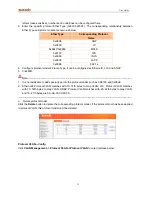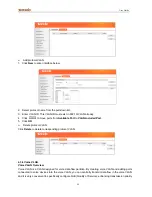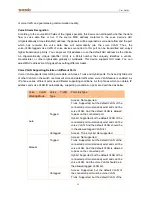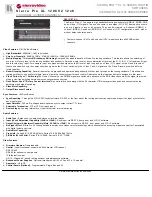
User Guide
40
user B and user C to the other VLAN.
802.1Q VLAN
VLAN Tag:
As defined in IEEE 802.1Q, a four-byte VLAN tag is inserted after the DA&SA field to identify frames of
different VLANs.
(1)
TPID: The 16-bit TPID field with a value of 0x8100 indicates that the frame is VLAN-tagged.
(2)
Priority: The 3-bit priority field indicates the 802.1P priority of the frame (0-7).
(3)
CFI: CFI is a 1-bit field, indicating whether the MAC address is encapsulated in the standard
format in different transmission media. A value of 0 indicates that MAC addresses are
encapsulated in the standard format. A value of 1 indicates that MAC addresses are
encapsulated in a non-standard format. For Ethernet switches, it is advisable to set this value to
0.
(4)
VID: The 12-bit VLAN ID field identifies the VLAN which the frame belongs to. The VLAN ID
range is 0 to 4095. Because 0 and 4095 are reserved, a VLAN ID actually ranges from 1 to 4094.
802.1Q VLAN Port link type:
When creating the 802.1Q VLAN, you should set the link type for the port according to its connected
device. The link types of port including the following three types:
(1)
Access: An access port belongs to only one VLAN. It is usually used to connect a PC.
(2)
Trunk: A trunk port can carry multiple VLANs to receive and send traffic for them. Usually, ports
that connect switches are configured as trunk ports.
(3)
Hybrid: Like a trunk port, a hybrid port can carry multiple VLANs to receive and send traffic for
them. A port connected to a network device or user terminal can be configured as a hybrid port.
Different packets, tagged or untagged, will be processed in different ways, after being received by ports of
different link types, which is illustrated in the following table:
Port Type
Receiving Tagged
Packets
Receiving
Untagged
Packets
Forwarding Packets
Access
The packet will be
forwarded to other
ports in the
The packet will
be forwarded to
other ports in
The packet will be
forwarded after removing its
VLAN tag.

